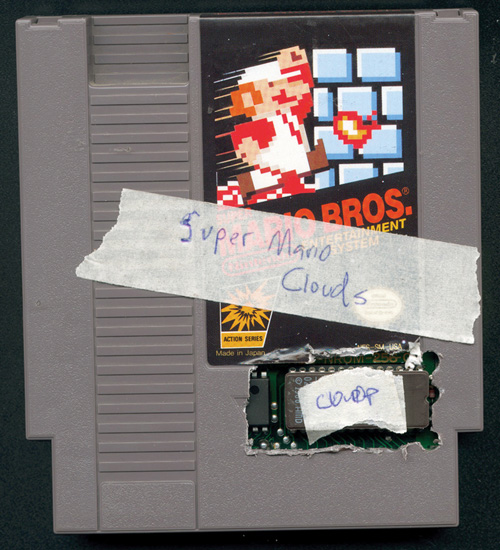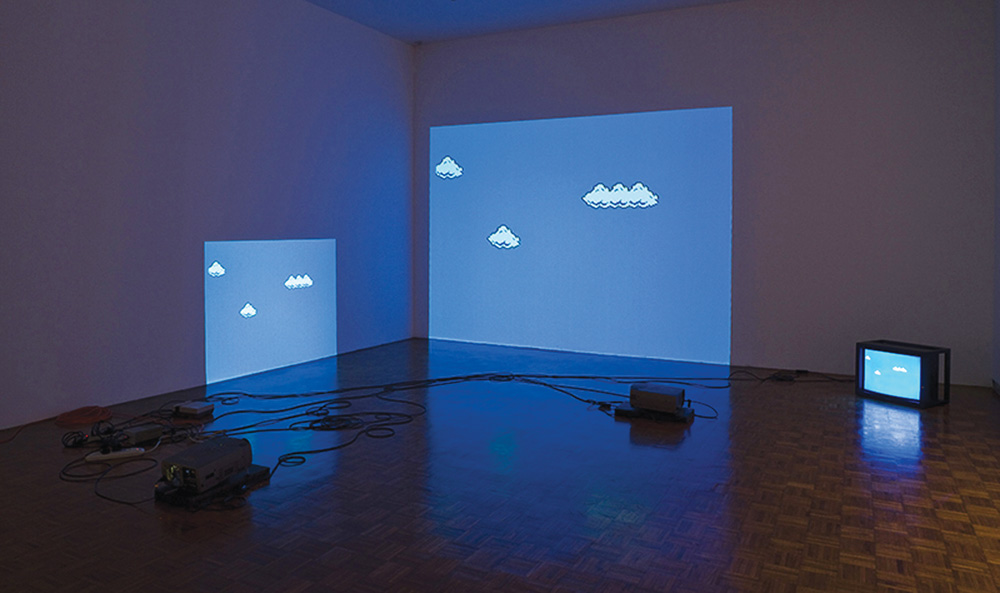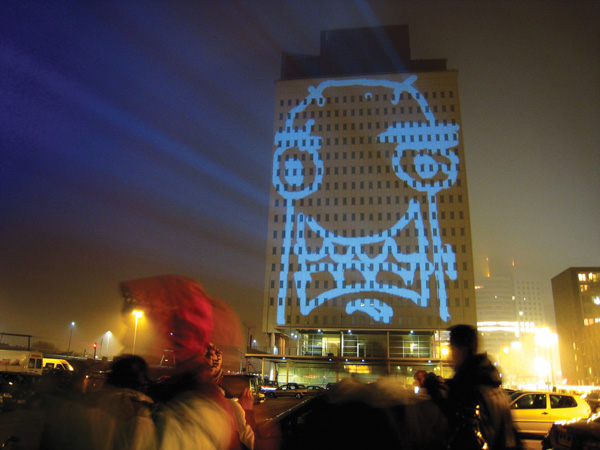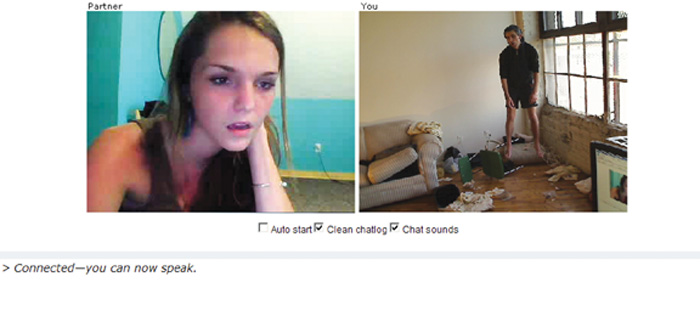« Features
The Weirdness We’ve Come to Accept
“Hackers are free people, just like artists who wake up in the morning in a good mood and start painting,” stated Russian President Vladimir Putin as he denied Russian involvement in the 2016 U.S. Presidential Election (1). This is funny (ironic) coming from Putin. But in the overall spectrum of things, it may not be far from the truth. Artists and criminals (hackers in this case) have been compared many times in the past. Writer and pioneer of the cyberpunk genre, William Gibson, once said “…give me a room full of either artists or criminals talking about what they might be able to do with an emergent technology and I’ve got it, I’ve made my lunch (2).” He also described criminals as “entrepreneurs with the brakes off (3).”
So, what’s the significance of artists and hackers sharing traits that place them outside established societal norms? Currently society looks to protectionist agencies to forecast the pros and cons of Internet content. But could the prescience of artist/hackers actually be the truest diviner of how technology is altering our culture? Their unfiltered curiosity to explore the recesses of Internet culture exposes aspects of social engagement we sometimes overlook. Their ungoverned and excessive practices toward questioning social constructs might just expose the reality of our behavior regardless of conventions.

Cory Arcangel, Super Mario Clouds, 2002/, handmade hacked Super Mario Bros cartridge and Nintendo NES video game system, dimensions variable. © Cory Arcangel. Courtesy of the artist.
As Internet trends build on one another, we’ve found the least significant acts often have the most profound, lasting effects. Deceptive memes, like the Bernie Sanders ‘dank memes’ from 2016 or ongoing claims of rising crime, reshape our perception through humor, fear and misinformation to construct the strangeness of communities around which we tend to gather. They feed off the Brandolini Bullshit Asymmetry Principle stating how it takes more energy to refute fake news than it does to create. Artists in this article uncover some of the odd qualities of what has become of our communication practices through the Internet. Each delivers content from a different approach, but overall they share the hacker ethos of openness and sharing that leads to a decentralization of information or mimicking an awareness of what we are doing.

Installation view of “Synthetic “at the Whitney Museum of American Art, New York, (January 22 - April 19, 2009) Photo: Sheldan C. Collins. Courtesy of Cory Arcangel.
Back in 2004, a young artist/hacker named Cory Arcangel uploaded a variation of Google, named Dooogle.com. Instead of finding everything you searched for, this browser retrieved content related to Doogie Howser-just for kicks. Doogie Howser was the medical-drama in the 1990s that launched Neil Patrick Harris’s career as a child protégée. Dooogle.com is still operational. On the surface, it’s not much. It just turns every query into “Doogie Howser.” but it amplifies what browsers actually do. No matter what your search is, the first five results are as follows.
Goofy hacks like these prevail through the Internet. People hack pretty much everything from video games to blocking unwanted Twitter followers. Arcangel’s penchant is to hack outdated gaming consoles called “game mods”. 8-bit video games from the 80s by Atari and Nintendo, like Super Mario, are his specialty. Super Mario Clouds (2002) made him famous in a niche area of the online community. He surgically extracts code to limit functionality and to eliminate audio and visual elements, leaving an eerie Zen loneliness for the viewer to ponder. With Super Mario Clouds, all that’s left is the continuous loop of clouds passing against a cerulean background. The installation of Super Mario Clouds in the 2004 Whitney Biennial, appeared as though some kids couldn’t get their game to boot properly and simply left, a bunch of cords covered the floor surrounding two projectors pointed low at adjacent walls.
Similar to Dooogle is Shaved Bieber, a bookmark you can load in your toolbar. It’s designed to shield one against all mentions of Justin Bieber on the web, including social media. Written and launched by Greg Leuch, Shaved Bieber (2010) covers all information related to Bieber with solid rectangular shapes. When enabled, websites appear like FBI files with redacted content. Unlike Dooogle though, Shaved Bieber quickly received publicity, especially when a media site misinterpreted the functionality and claimed the filter was deleting all Bieber related content from the Internet. The Belieber nation immediately came after Leuch. Young girls sending death threats defending their demigod. In the end, no harm no foul (4).

Cory Arcangel, Various Self Playing Bowling Games, 2011 (still), hacked video game controllers, game consoles, cartridges, disks, and video, dimensions variable. © Cory Arcangel. Courtesy of the artist.
Leuch is known for playful alterations to bookmarks and filters that tweak Internet content. His previous project, KANYEFY changed media feeds from Kanye West. This bookmark allowed users to emulate Kanye’s online rants by shifting letters on a page to all uppercase. Kanye is known for posting in all caps, which makes his tirades walls of letters. KANYEFY makes the Internet look like it’s screaming at you.
“SOUTH PARK MURDERED ME LAST NIGHT AND IT’S PRETTY FUNNY. IT HURTS MY FEELINGS BUT WHAT CAN YOU EXPECT FROM SOUTH PARK! I ACTUALLY HAVE BEEN WORKING ON MY EGO THOUGH. HAVING THE CRAZY EGO IS PLAYED OUT AT THIS POINT IN MY LIFE AND CAREER. I USE TO USE IT TO BUILD UP MY ESTEEM WHEN NOBODY BELIEVED IN ME. NOW THAT PEOPLE DO BELIEVE AND SUPPORT MY MUSIC AND PRODUCTS THE BEST RESPONSE IS THANK YOU INSTEAD OF “I TOLD YOU SO!!!” IT’S COOL TO TALK SHIT WHEN YOU’RE RAPPING BUT NOT IN REAL LIFE. WHEN YOU MEET LITTLE WAYNE IN PERSON HE’S THE NICEST GUY FOR EXAMPLE. I JUST WANNA BE A DOPER PERSON WHICH STARTS WITH ME NOT ALWAYS TELLING PEOPLE HOW DOPE I THINK I AM. I NEED TO JUST GET PAST MYSELF. DROP THE BRAVADO AND JUST MAKE DOPE PRODUCT. EVERYTHING IS NOT THAT SERIOUS. AS LONG AS PEOPLE THINK I ACT LIKE A BITCH THIS TYPE OF SHIT WILL HAPPEN TO ME. I GOT A LONG ROAD AHEAD OF ME TO MAKE PEOPLE BELIEVE I’M NOT ACTUALLY A HUGE DOUCHE BUT I’M UP FOR THE CHALLENGE. I’M SURE THE WRITERS AT SOUTH PARK ARE REALLY NICE PEOPLE IN REAL LIFE. THANKS FOR TAKING THE TIME TO DRAW MY CREW. THAT WAS PRETTY FUNNY ALSO!! I’M SURE THERE’S GRAMMATICAL ERRORS IN THIS… THAT’S HOW YOU KNOW IT’S ME!”
Online post from Kanye West (5)
A later iteration was lowercase Kanye, which turned all of Kanye’s rants into readable text by placing all letters in lowercase.
Projects like Doogle.com, Shaved Bieber and KANYEFY are interesting ways to reflect on the information we consume, what we believe, and how our information is easily manipulated. Plus they demonstrate or forecast societal vulnerabilities we face.
In 2012, a Twitter post launched from Entertainment Tonight shared the bitter news of Justin Bieber being diagnosed with cancer. Moments later, #BaldForBieber was formed. Videos gushed and Facebook pages sprang up in support. The Belieber nation was in full-throttle emergency relief mode-tweens all over the globe uploading images of freshly shaven heads supporting their meaningful cause. Four days later however, it was all revealed as a hoax; Bieber was fine. The joke originated from an anonymous imageboard called 4Chan that swarms with members of the hacktivist group, Anonymous.
4Chan isn’t full of artists exposing society’s truths, but by design it sometimes does. By giving anonymity to users it ensures creative people will come-good and bad. The Guardian described 4Chan as “a message-board whose lunatic, juvenile community is at once brilliant, ridiculous and alarming (6).” 4Chan has a history of mischief-big and small. They created the Rickrolling meme. Rickrolling is the juvenile practice of sending links to seemingly useful websites, only to find they connect to videos from 1980s crooner Rick Astley.
4Chan contains the level of grossness expected from an anonymous site that deletes conversations as they form. The termination point is somewhere around ten pages. In active threads, that equals a few minutes. Shock porn and gore prevail in nastier threads such as /b/. Also, some of the hoaxes are less than funny. They’re responsible for numerous fake bomb threats, nude photos of celebrities and one of the first coordinated cyberbully initiatives where 4Chan trolls publicly harassed eleven-year-old Jessie Slaughter, publicly wrecking her life and leading her to several suicide attempts (7).
In looking at the totality of what we do online, the strangest phenomenon on the Internet could be how it turns bizarre events into normalized daily rituals. We accept the peculiar, brash and creepy interactions to which we are now addicted as just part of the forum. We invite technology to capture and exploit our most vulnerable moments with millions, yet we expect our data to remain private. We binge on what we want reality to be, and scoff at anything counter to our beliefs. Bieber has 100 million followers. So, #BaldForBieber was a big deal when it happened, as the prank affected a huge global population. But shortly thereafter, it just became part of the reel of Internet history-whatever.
Circling back, Cory Arcangel subtly fuses nostalgia into his appropriated reorientations of the digital things around us. Futility is a common theme. He once created a crawler to search the Internet nightly sifting through blogs to find posts including “Sorry I haven’t Posted (8).” Each morning, he’d peruse his findings to post on his blog. One post stated, “Hey gang. Sorry I haven’t posted in a while. I recently had a very, very, very, minor, very, very, very, mild heart attack…” Another’s excuse was they had been crafting a Megan Fox SIM. His other 8-bit hacks include Various Self Playing Bowling Games, where the controllers have been modified to throw gutter balls. They continue over and over. Futility and failure continue to the point of ridiculousness. It’s a quirky reminder of absurdity, the likes of any interview with Andy Warhol or Bruce Nauman’s 1968 video, Stamping in the Studio.
Leuch served as Virtual Research Fellow of the Free Art and Technology Lab (F.A.T. Lab) that lasted from 2004 to 2015. Twenty other artist/hackers comprised the membership of the F.A.T. Lab to enrich the public domain and to create a wake of confusion to most who came in contact. At one point, they created a mockup of a Google street view car. The unquestioned respect for the street view car was tested as they drove through town at a snail’s pace, blocking numerous cars without a single, contentious honk. They also posted how they hacked a Google car’s whereabouts and shared online. The idea was to infiltrate the trust we have for Google. The project ended with a cease and desist letter from Google that’s posted on the F.A.T. Lab’s site.
Eventually, Leuch’s Shaved Bieber bookmark transformed to a viable add-on by Heineken called Fever Keeper. In the case of time-delayed soccer matches, users could block spoiler content on all sites, including social media.
The F.A.T. Lab had a run of 10 years. Their final post is a scrolling announcement that the war against centralization and commercialization is lost-like a bad ending to the Hunger Games. That marked a turning point for co-founder and internationally known artist/hacker Evan Roth. Originally, he viewed the web “as a starting point for an alternative, more benevolent power structure, based on global community-building and free exchange of information (9).” His early works include legendary collaborations such as EyeWriter, designed for LA Graffiti artist, TEMPTONE. TEMPTONE who was diagnosed with ALS in 2003 was eventually paralyzed from the neck down. The technology for EyeWriter was open source and low cost. It enabled the graffiti artist to use his eye movements to project laser graffiti on the sides of buildings, or any vertical surface. TEMPTONE could tag from his hospital bed-in Real Time.
Roth’s form of hacking was about subverting tools and systems, even those made to subvert other systems, like Wikipedia-the site that destroyed Encyclopedia Britannica. His series of animations, No Original Research, is formed from content on Wikipedia’s core content pages. He designs kinetic works by copying gif files over and over again into a single page. As your browser loads images, they fall out of synch and fail to load properly. It’s an “animation cycle that visualizes the latencies specific to the viewer (10).” They have a similar entrancing effect as “must see” Instagram animations of endless Mobius strips or videos of people mixing multi-colored slime. After loading it, you can watch your computer slow to a crawl as it eats up memory.
Sometimes, Roth’s work leaves open the possibility that the Internet isn’t rotting our whole brain-just wasting our time. “Level Cleared” focuses on nuanced gaming interactions. 300 small sheets of tracing paper pinned to the wall in an ordered grid, show all strokes necessary to win Angry Birds. This obsessive reminder of the obsessive nature of video games demonstrates the time, skill, focus, and possible addiction required for gaming. Every successful finger movement to play Angry Birds from beginning to end is recorded on tracing paper with a finger dipped in ink. There are more than 300 levels to Angry Birds. He also kept a loser stack of unsuccessful attempts which is about equal in number. As Kyle Vanhemert describes it in his article “Behold, The Winning Swipe For Every Level Of Angry Birds” for Fast Company, Roth records an invisible…
…skill we all just picked up instantly-using our thumbs to navigate apps with a thoughtless, balletic grace… All those interactions, however, are invisible to us-until you put some ink on your finger and slide a sheet of tracing paper on top of your screen (11).
Historically, acts of subversive artists are based in civil disobedience, not criminal behavior associated with profiteering. Artists do like challenging norms and rules. Think of Duchamp and his controversial sculpture Fountain. It challenged and changed the working definition of art. He called works like Fountain readymades because they were already made. He just had to choose them. More recently Ai Weiwei dropped what he calls a “Cultural Readymade,” a two thousand year old Han Dynasty Urn. Ai responded to an outraged public with “General Mao used to tell us that we can only build a new world if we destroy the old one (12).”
The Internet drops somewhere between utopia and dystopia, depending on how you view it. We are so accustomed to interacting with it that we’ve acquiesced in defense of its misgivings. We give up personal information so readily that Facebook definitely knows more about our interests than we. Its software dispassionately mines data at a baffling rate. Plus, the selectivity of what we get skews our reality as cognitive biases reinforce our prejudiced beliefs.
Search engines only pull indexed and accessible information, representing a tiny part of what makes up the Internet. The other part, the so-called “Deep Web,” is over 90% larger than the surface web we know. Credit reporting agency, Experian, warns us through alarming commercials about our vulnerabilities to the dark (deep) web, the ninth circle of hell. But they too get hacked. Experian’s security breach exposed over 140 million of their customers (13). Even though the dark web is there, is it really the weirdest, or most dangerous part of the Internet? And do we look past the most disturbing acts as commonplace now? In this realm of fuzzy realism, there’s a fine line where artistic expression overlaps reality. It transitions what we’ve come to believe as truth and verges on criminal intent.
Saddling the edge of cyber malfeasance is the intrepid Italian couple, Eva and Franco Mattes. These artists/hackers stole 10,000 photos from unknowing victims’ hard-drives by exploiting a glitch in a file sharing program. They subsequently projected these publicly as an exhibition at the Carroll/Fletcher Gallery in London, entitled The Others (the name changes periodically). This is not the first time they’ve stolen stuff. They once created a work of art from bits of priceless artworks pilfered from museums-yes, they swiped fragments of other works to create a new work. Continuing to surf that edge of criminality, they posted a video of a mock hanging, No Fun that was pulled from the Internet due to its objectionable content.

Tempt1, Evan Roth, Chris Sugrue, Zach Lieberman, Theo Watson and James Powderly, EyeWriter, 2009, custom free software. Courtesy of Evan Roth.
The Mattes prefer wading through the “murkier” side of Internet content. They bring attention to the topics we’d prefer not to think about. Dark Content is a video installation of small monitors mounted to sides of oddly shaped, overturned office desks. It reveals stories of anonymous people inhabiting a non-existent workspace. There’s a strange play of ambiguity as the screens show digital avatars voicing the depressing lives of online content moderators. Content moderators are nameless people editing our reality behind the screen. They are real people reviewing content in social media feeds including videos, photos and text on social media sites to limit the offensiveness of our online experiences.
Yes, I thought software did this. But the answer is no, there’s a huge industry of anonymous workers viewing content and making choices on what is too disgusting for us to view. This seems all well and good, but as Alexis Madrigal states in her article, The Basic Grossness of Humans, the “facelessness of the bureaucracy is total (14).” With this good/bad relationship where we don’t want child pornography, hoaxes or a host of extremist content to proliferate our iPads and phones, there is a downside. A bunch of unknown people are curating our content without us knowing.

Eva and Franco Mattes, Dark Content, 2016, customized Ikea desks, monitors, videos, headphones or loudspeakers, various cables. Exhibition view at Carroll/Fletcher Gallery, London.
When asked about the moral questions their work incites, Eva responded, “We wanted to create a space where there’s room for risk and a room for discussion.” And… “Sometimes if you don’t shake those boundaries, you don’t create conversation (15).”
The content is from interviews of a hundred content moderators dubbed over avatars with computer-generated voices. It began with an online ad for a fictitious company looking for moderators. Instead of an interview, the moderators were asked to tell their stories. As you might think, these were depressing at best. Stories of killing animals, solicitation and racism are now gone from the Internet, but remain burned in their memories (16). One avatar, a twenty-something looking businessman, speaks in the kindest female voice saying, “I’ve also seen people having sex with animals.” Another, says, “Yeah, I can remove the content. But the shit is still in my head (17).”
Content moderators were the ones who blocked, No Fun, the Mattes video of a mock hanging. However, the most objectionable aspect of the work may be the reactions of viewers. It was staged on a website designed to randomly pair users for web-cam conversations. The Mattes captured the video of those viewers and made them the subject. Thousands watched for hours not knowing it was fake, one masturbated; one called the police (18). The Mattes created “…a situation of the most dire loneliness and effect, exaggerating the distance and lack of real engagement in online encounters, to slow down the endless social media flux with a moment of absolute reality (19).” The result was startling.
As we Google for weather updates, check Instagram feeds, or YouTube cat videos, we surf the “surface web.” The surface web is a mere speck of our digital macrocosm. The concept of the “deep web” conjures thoughts of malfeasance to the degree of cyber terrorism and pornography. And yes, all that bad stuff is there. However, the readily accessible Internet we search daily is no less bizarre or risky. We’ve just become acclimated to the extent we blindly accept whatever it offers, and what it takes.
To lift the covers on what’s really out there, should we turn to those willing to stray outside societal norms-those who like breaking the rules? In the wake of the 2016 Presidential election, we’ve come to know that the news we follow isn’t necessarily coming from the sources we thought. We watched Facebook trolls alter the results of democracy. Around 126 million people saw ads, posts and comments by a Russian group called the Internet Research Agency sowing discontent throughout the nation. (20) The funny irony behind Putin’s comparison of artists and criminals is that it might be to our advantage to ponder. Internet content is regularly being manipulated by nefarious people. And the friends we accept are sometimes not people at all.
Artists aren’t criminals. But if we look to their quirky and obsessive expressions of the age of the Internet, we might find they hold a freakishly accurate mirror reflecting truer behavior. And according to them, there may be no end to the weirdness we’ve come to accept.
NOTES
1. ‘Hackers are free people like artists’ Vladimir Putin explains why the Kremlin isn’t the meddling bogeyman Western democracies say it is. (June 1, 2017). Retrieved from Meduza: https://meduza.io/en/feature/2017/06/01/hackers-are-free-people-like-artists.
2. Sydell, Laura. Artists And Criminals: On The Cutting Edge Of Tech. (February 20, 2018). Retrieved from NPR: All Tech Considered: https://www.npr.org/sections/alltechconsidered/2018/02/20/585535355/artists-and-criminals-on-the-cutting-edge-of-tech
3. Ibid.
4. About. (May 26, 2018). Retrieved from F.A.T. Lab: http://fffff.at/about/
5. Woolf, Jake. The 5 Kanye West Rants that Make Us Miss His Blog. (June 8, 2017). Retrieved from GQ: https://www.gq.com/story/5-kanye-west-rants-that-make-us-miss-his-blog.
6. Michaels, S. (March 19, 2008). Taking the Rick. Retrieved from The Guardian: https://www.theguardian.com/music/2008/mar/19/news
7. Dewey, Caitlin. Absolutely everything you need to know to understand 4chan, the Internet’s own bogeyman. (September 25, 2014). Retrieved from The Washington Post: https://www.washingtonpost.com/news/the-intersect/wp/2014/09/25/absolutely-everything-you-need-to-know-to-understand-4chan-the-internets-own-bogeyman/?noredirect=on&utm_term=.11a665d846df
8. Arcangel, Cory. Artist talk: Cory Arcangel at Whitechapel Gallery. (June 24, 2016). Retrieved from Youtube: https://www.youtube.com/watch?time_continue=586&v=jrS0VlYZmkQ
9. Milliard, Coline. Landscape with a Ruin. (October 20, 2017) Retrieved from Evan Roth: http://www.evan-roth.com/work/landscape-with-a-ruin/
10. Roth, Evan. No Research Original. (2014) Retrieved from Evan Roth: http://www.evan-roth.com/work/no-original-research/
11. Vanhermert, K. Behold, The Winning Swipe For Every Level Of Angry Birds. (December 3, 2012). Retrieved from Fast Company, Co.Design: https://www.fastcodesign.com/1671349/behold-the-winning-swipe-for-every-level-of-angry-birds#1
12. Ai Weiwei. (2018). Retrieved from Guggenheim: https://www.guggenheim.org/arts-curriculum/topic/ai-weiwei
13. Timberg, Craig, Dwoskin, Elizabeth, and Fung, Brian. Data of 143 million Americans exposed in hack of credit reporting agency Equifax. (September 7, 2017). Retrieved from The Washington Post: https://www.washingtonpost.com/business/technology/equifax-hack-hits-credit-histories-of-up-to-143-million-americans/2017/09/07/a4ae6f82-941a-11e7-b9bc-b2f7903bab0d_story.html?noredirect=on&utm_term=.9198d17afa13
14. Madrigal, Alexis C. ‘The Basic Grossness of Humans’. (December 15, 2017). Retrieved from The Atlantic: https://www.theatlantic.com/technology/archive/2017/12/the-basic-grossness-of-humans/548330/
15. Satter, Raphael. Stolen digital photographs on display in London. (April 12, 2012). Retrieved from Yahoo, Associated Press: https://www.yahoo.com/news/stolen-digital-photographs-display-london-144802090.html
16. Madrigal, Alexis C. ‘The Basic Grossness of Humans’. (December 15, 2017). Retrieved from The Atlantic: https://www.theatlantic.com/technology/archive/2017/12/the-basic-grossness-of-humans/548330/
17. Mattes, Eva and Franco Mattes. Dark Content. (2015). Retrieved from Eva and Franco Mattes: http://0100101110101101.org/dark-content/
18. Viveros-Fauné, Christian. Eva and Franco Mattes Dive into the Dark. (May 28, 2014). Retrieved from The Village Voice: https://www.carrollfletcher.com/usr/library/documents/main/christian-viveros-faune-eva-and-franco-mattes-dive-into-the-dark-web-in-new-tribeca-show-village-voice-may-2014.pdf
19. Mattes, Eva and Franco Mattes. No Fun. (2010). Retrieved from Eva and Franco Mattes: https://0100101110101101.org/no-fun/
20. Bump, Philip. All the ways Trump’s campaign was aided by Facebook, ranked by importance. (March 22, 2018). Retrieved from The Washington Post: https://www.washingtonpost.com/news/politics/wp/2018/03/22/all-the-ways-trumps-campaign-was-aided-by-facebook-ranked-by-importance/?utm_term=.18e8b6dc863a
Scott Thorp is an artist, writer and educator specializing in creativity. He is chairperson of the Department of Art and associate vice president for interdisciplinary research at Augusta University, as well as a contributing writer and editor for ARTPULSE. Additionally, he serves on the board of directors for Westobou Festival and is vice president of the Mid-America College Art Association. With an MFA in drawing and painting from the Mount Royal School of Art at the Maryland Institute College of Art, he has exhibited often in museums and galleries in the Mid-Atlantic region of the U.S., including the Corcoran Gallery of Art in Washington, D.C.









































Leave a Reply
You must be logged in to post a comment.